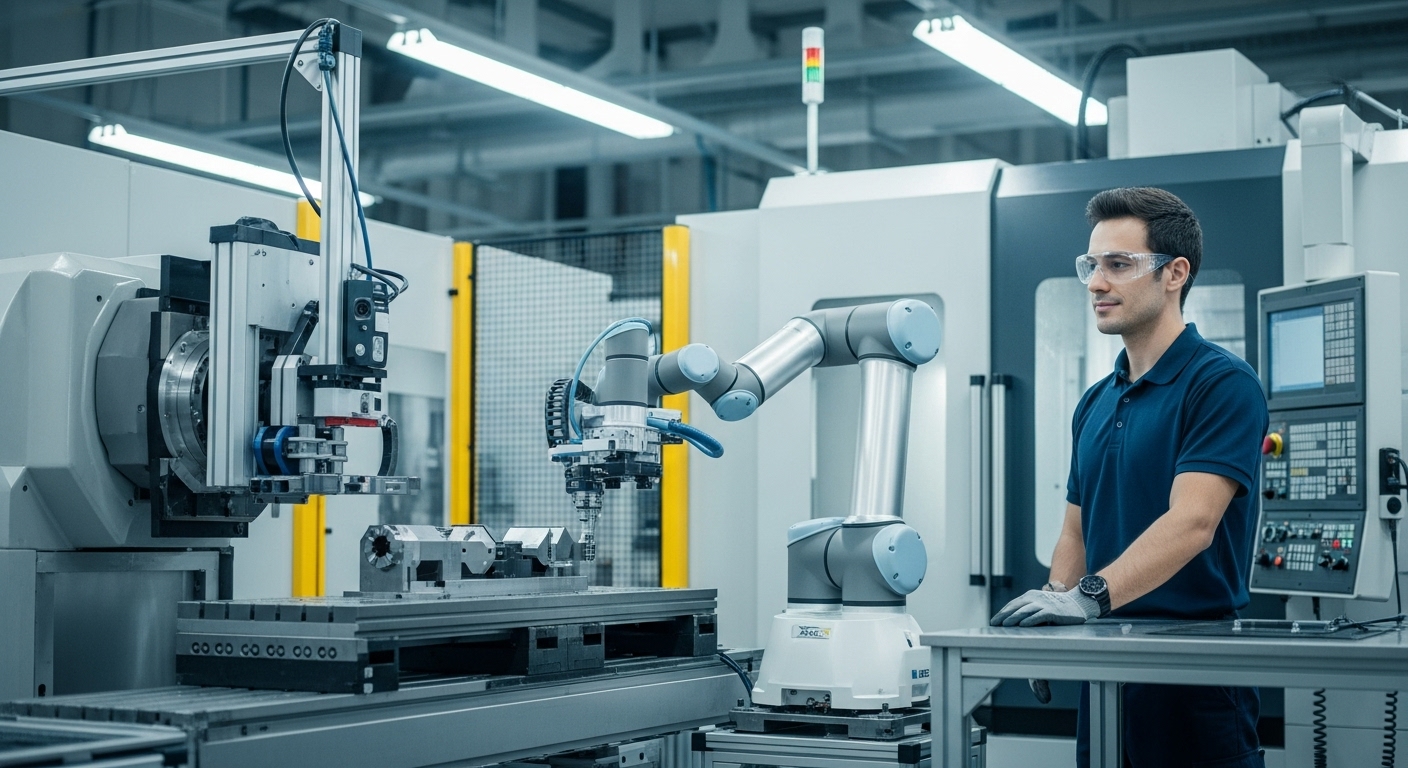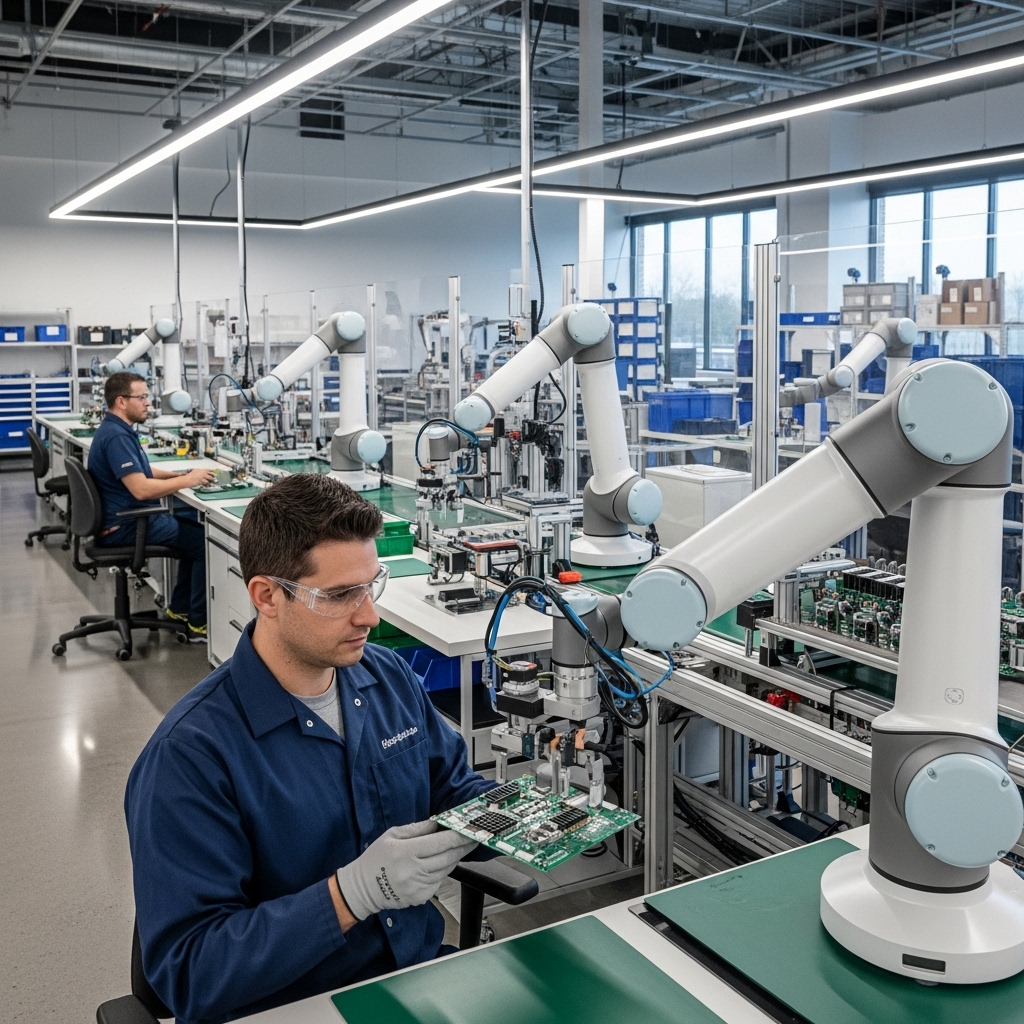The manufacturing world is experiencing a rapid evolution, driven by technological advancements and increased global competition. For small to medium-sized enterprises (SMEs), embracing this change is not just an option but a necessity to remain competitive and relevant. Industry 4.0, often referred to as the Fourth Industrial Revolution, is at the forefront of this transformation. It focuses on the creation of smart factories that leverage cutting-edge technology to enhance efficiency, productivity, and competitiveness. This guide aims to provide SMEs with a clear roadmap to begin their journey towards becoming a smart factory, ensuring they are well-equipped to thrive in the modern industrial landscape.
The integration of technologies such as the Internet of Things (IoT), cyber-physical systems, cloud computing, and artificial intelligence (AI) forms the backbone of a smart factory. These technologies work in tandem to create a seamless, automated environment where data exchange is optimized, and decision-making is data-driven. For SMEs, this transformation represents an opportunity to streamline operations, reduce costs, and increase market responsiveness. However, the journey towards digital transformation can be daunting without a clear understanding of the steps involved and the benefits that can be realized. Let’s delve into the concept of smart factory solutions and explore how SMEs can embark on this transformative journey.
A smart factory is not just a futuristic concept; it is a practical solution for modern manufacturing challenges. By leveraging digital technologies, a smart factory can significantly enhance the efficiency and agility of manufacturing processes. The integration of cyber-physical systems, IoT, cloud computing, and AI enables factories to operate with a higher degree of automation, facilitating seamless data exchange across the production floor.
Key Benefits for SMEs
- Increased Productivity: Automation of repetitive tasks allows human resources to focus on complex problem-solving and innovation. This shift not only boosts overall productivity but also enhances employee satisfaction by reducing monotonous workloads.
- Cost Efficiency: Smart factories excel in minimizing waste and optimizing resource utilization. Through precise monitoring and control, SMEs can significantly cut costs associated with material wastage, energy consumption, and labor inefficiencies.
- Better Quality Control: The ability to monitor production in real-time and utilize data analytics ensures consistent quality standards. By identifying defects early and addressing them promptly, companies can maintain a high-quality output, reducing the risk of recalls and customer dissatisfaction.
- Faster Time to Market: Streamlined processes and enhanced decision-making capabilities enable quicker product development cycles. This agility allows SMEs to respond promptly to market demands and capitalize on new opportunities.
Steps to Start Your Digital Transformation
Embarking on the Industry 4.0 journey may seem overwhelming, especially for SMEs with limited resources. However, by breaking down the process into manageable steps, businesses can navigate the transformation with confidence and clarity.
Step 1: Assess Your Current Situation
Begin by conducting a thorough evaluation of your current manufacturing processes. Identify areas where digital solutions could provide the most value, such as reducing bottlenecks or improving quality control. A SWOT analysis can be an invaluable tool in this phase, helping you understand your strengths, weaknesses, opportunities, and threats in the context of digital transformation.
Consider involving cross-functional teams in this assessment to gain diverse perspectives and insights. This collaborative approach can uncover hidden inefficiencies and highlight potential areas for improvement, setting a strong foundation for your digital transformation journey.
Step 2: Set Clear Goals
Establishing clear, strategic objectives is crucial for guiding your digital transformation efforts. Determine specific outcomes you wish to achieve, whether it’s cost reduction, enhanced quality, or improved customer satisfaction. Utilize the SMART criteria—Specific, Measurable, Achievable, Relevant, and Time-bound—to define goals that are realistic and aligned with your business vision.
Communicate these goals across your organization to ensure everyone is on the same page and working towards a common objective. This alignment fosters a cohesive approach to transformation and motivates employees to actively participate in achieving the set targets.
Step 3: Develop a Digital Transformation Roadmap
Create a detailed roadmap that outlines the steps your company will take to evolve into a smart factory. This plan should include both short-term actions and long-term strategies for integrating technology into every aspect of your operations. Consider factors such as budget constraints, resource availability, and potential challenges when developing this roadmap.
Regularly review and adjust the roadmap as needed to reflect changing circumstances and emerging technologies. A flexible approach ensures your transformation journey remains relevant and effective, enabling your business to adapt and thrive in a dynamic environment.
Step 4: Choose the Right Technologies
Selecting the appropriate technologies is a critical step in your digital transformation journey. Not all technologies will be relevant to every business, so focus on those that align with your specific goals and offer the most significant return on investment. Common smart factory technologies include:
- IoT Devices: Essential for real-time data collection and monitoring, enabling proactive decision-making and process optimization.
- AI and Machine Learning: These technologies can predict maintenance needs, optimize production schedules, and enhance decision-making capabilities.
- Cloud Computing: Provides scalable data storage and processing, facilitating seamless data integration and accessibility across your organization.
Carefully evaluate the potential impact of each technology on your operations and consult with industry experts if needed. This strategic selection process ensures that the technologies you adopt will effectively support your transformation goals.
Focus Areas for Digital Transformation
by Shavr IK (https://unsplash.com/@shavr)
While technology plays a central role in digital transformation, it is not the only focus area. A successful transition to a smart factory requires attention to several key areas that complement technological advancements.
Workforce Training
Your employees are your most valuable asset in the digital transformation journey. Ensuring they are prepared for the changes that come with new technology is crucial for a smooth transition. Provide comprehensive training programs that equip your workforce with the skills needed to operate and leverage new tools effectively.
Encourage a culture of continuous learning and innovation, where employees are motivated to embrace new technologies and contribute to process improvements. This proactive approach not only eases the transition but also empowers your workforce to drive the success of your smart factory initiatives.
Data Management
A smart factory generates a vast amount of data, which can be overwhelming if not managed effectively. Develop a robust strategy for collecting, storing, and analyzing data to make informed decisions and optimize your processes. Implement data governance practices to ensure data accuracy, security, and accessibility.
Invest in advanced analytics tools that enable you to extract actionable insights from your data. These insights can drive strategic decision-making, improve operational efficiency, and enhance customer experiences, providing a competitive edge in the market.
Cybersecurity
With increased connectivity comes increased risk, making cybersecurity a top priority for smart factories. Protect your digital assets by implementing robust cybersecurity measures, such as encrypting sensitive data, deploying firewalls, and regularly updating software.
Conduct regular security audits and employee training to ensure everyone is aware of potential threats and best practices for safeguarding data. A proactive approach to cybersecurity minimizes the risk of data breaches and ensures the integrity and confidentiality of your digital operations.
Case Study: Digital Transformation in Manufacturing
Real-world examples of successful digital transformations in manufacturing can provide valuable insights and inspiration for SMEs embarking on their own journeys.
Company: XYZ Manufacturing
XYZ Manufacturing, a mid-sized producer of automotive components, embarked on their Industry 4.0 journey with the goal of reducing production downtime and improving product quality. Here’s how they did it:
- Assessment: The company identified critical bottlenecks in the production line where downtime was highest, affecting overall efficiency and product delivery timelines.
- Goal Setting: They set a clear goal to reduce downtime by 30% within one year, aligning this objective with their broader strategic priorities.
- Roadmap: A comprehensive plan was developed to implement IoT sensors and predictive maintenance software, focusing on key areas with the highest potential for improvement.
- Implementation: Sensors were deployed to monitor machine performance, and AI algorithms were used to predict maintenance needs before failures occurred, enhancing operational reliability.
- Results: XYZ Manufacturing achieved a 35% reduction in downtime, surpassing their initial goal. Additionally, product quality improved by 20%, leading to increased customer satisfaction and loyalty.
The Road Ahead
Embarking on a digital transformation journey requires commitment and a strategic approach, but the rewards can be substantial. By adopting smart factory solutions, SMEs can enhance their competitiveness, improve efficiency, and secure their place in the future of manufacturing.
Continuous Improvement
Digital transformation is not a one-time event but an ongoing process of adaptation and improvement. Regularly review your progress, stay informed about emerging technologies, and continue to refine your strategies to stay ahead in the competitive landscape. Encourage a culture of innovation and flexibility, where employees are empowered to contribute to continuous improvement initiatives.
In conclusion, the path to becoming a smart factory involves a combination of technology adoption, workforce training, and strategic planning. With the right approach, SMEs can successfully navigate the challenges of Industry 4.0 and reap the benefits of a digitally transformed manufacturing process. By committing to this journey, SMEs can position themselves as leaders in the industry, ready to seize new opportunities and drive sustainable growth.





